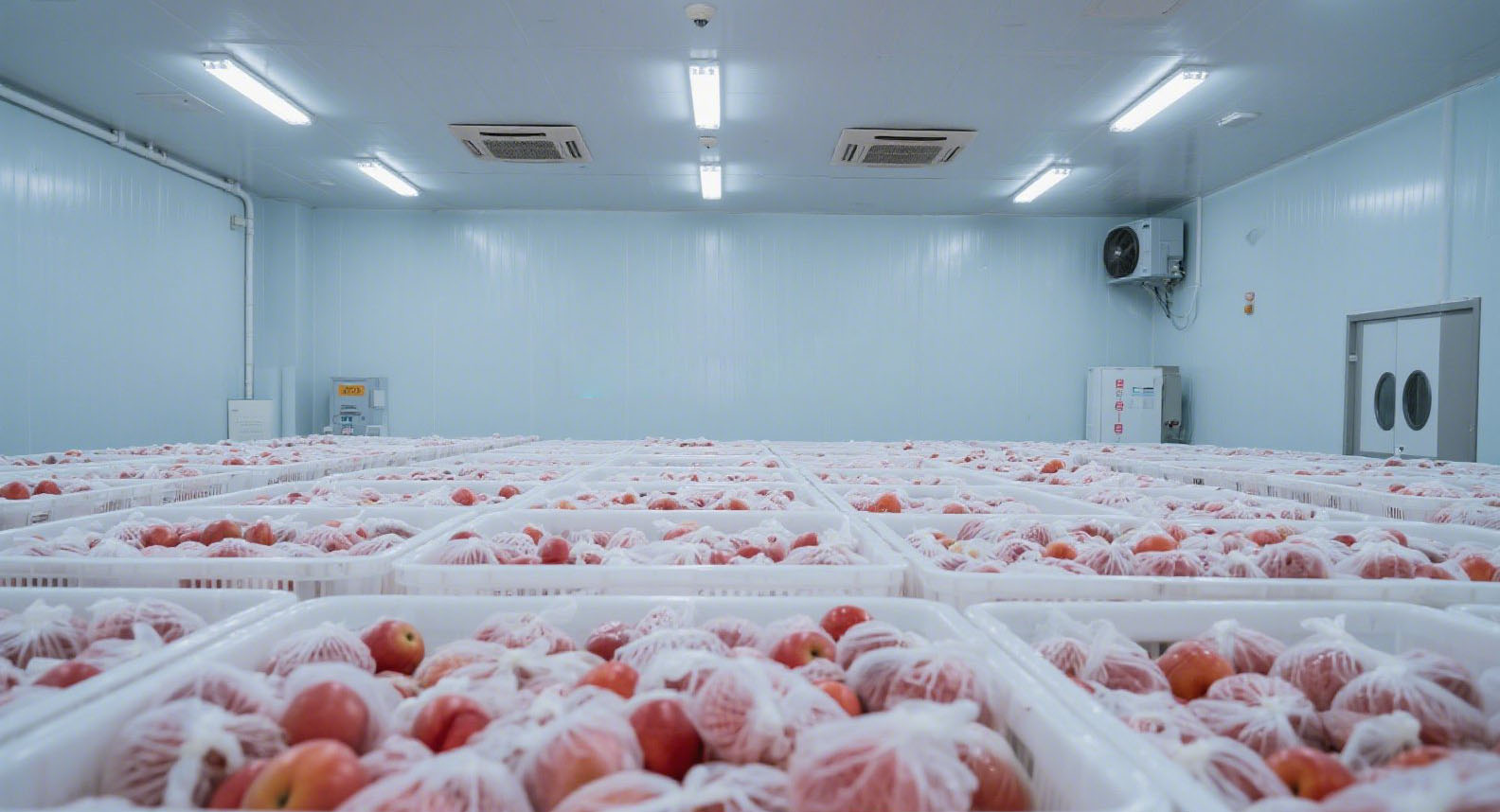Apple Refrigeration: Respiration in Cold Chain Logistics
Apples are one of the most widely consumed fruits globally. Thanks to their long shelf life and adaptability, they rank second only to bananas in cold-chain circulation. Nearly every region in the world can supply apples year-round, and especially during the Northern Hemisphere’s autumn and winter, apple storage and transportation rely heavily on cold-chain technology.
1. Temperature Control and Respiration Rate
To ensure freshness and maintain texture, apples are typically stored at 0 °C to 4 °C in refrigerated facilities. Within this range, the fruit’s respiration rate is dramatically reduced, which extends shelf life while preserving crispness and moisture.
Respiration Suppression: At temperatures below 4 °C, the metabolic activity of apples slows, delaying senescence and helping to retain firmness.
Chill Sensitivity: Temperatures below 0 °C risk chilling injury—manifesting as pitting or browning—so strict control is essential.
2. Humidity Management
Proper relative humidity (RH) in apple storage plays a critical role in preserving appearance and eating quality:
Optimal RH Range: 90 %–95 % RH prevents surface dehydration and shriveling while avoiding excess condensation that can spur decay.
Low Humidity Risks: RH below 90 % causes peel desiccation, leading to dull, leathery skin and textural degradation.
High Humidity Risks: RH above 95 % promotes surface moisture and condensation, which fosters mold growth and increases spoilage.
3. Controlled-Atmosphere (CA) Storage
To further extend storage life, many apple cold-chain systems employ controlled-atmosphere technology:
Gas Composition: Reducing oxygen levels (typically to 2 %–3 % O₂) and elevating carbon dioxide (to 2 %–5 % CO₂) slows respiration and ethylene production.
Shelf-Life Extension: Under CA conditions at 0 °C–4 °C and 90 %–95 % RH, apples can be kept market-ready for several months, even across seasons.
4. Global Logistics and Retail Handling
Advanced refrigerated equipment and rapid logistics enable efficient global apple distribution:
Pre-grading & Packaging: Sorting by maturity and appearance before cold storage streamlines handling and reduces waste.
Modular Storage Systems: Zoning within warehouses allows precise control of microclimates tailored to different apple varieties.
Last-Mile Handling: At retail, smart display cases monitor temperature and humidity, helping retailers adjust supply to keep apples in peak condition on the shelf.


 Return to List
Return to List

 Phone
Phone